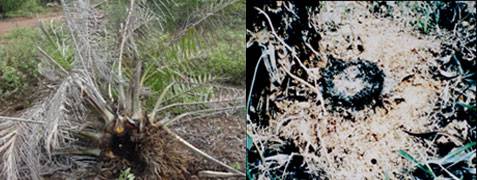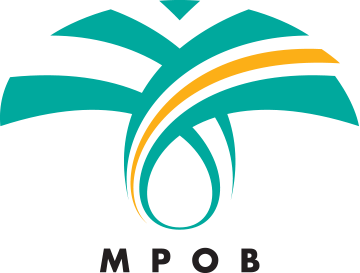Biology and Symptom
The disease incidence is low and no economic significance. As with several other disease affecting the roots and stem base, aerial symptoms provide the first visible symptoms of infections. Symptoms are initially seen on the oldest fronds which become a yellowish colored and die. The stem base is affected by a black, dry rot which is extremely hard and extends as a band of necrotic tissues across the entire base. This type of rot clearly distinguished charcoal base rot from lesion associated with Ganoderma attack.

Causal
It was suggested that, the pathogen was Ustulina deusta, originally known as U. zonata. This fungus was found as a pathogen of many plants including other plant crops such as rubber, coconut and tea, as well as saprophyte on dead stumps of forest tree. Infection is believed to take place by root contact with old stump which has been colonized by Ustulina, where the original sources of the fungus spread as air-borne spores. It is not known whether the disease spread from disease to healthy palms.
Disease Management and Control
By the time the foliar symptoms are visible, the internally structure already severe that treatment is impossible. Sanitation is required to remove the disease palms, otherwise they may become sources of Oryctes infestation or infection foci for Ganoderma outbreak.
